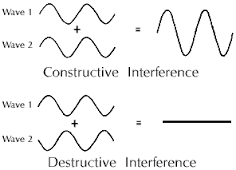Introduction to Audio
What is Sound ?
Sound is acoustical and mechanical form of energy. Sound is any disturbance that travels through a medium such as air, ground, or water to be heard by the human ear.Normal humans can hear from 20hz to 20khz.When this sound is processed and produced its called as audio.
Sound Waves
Sound waves are known as longitudnal wave form ,Particles vibrate or moves back and forth the oscillation causes a periodic disturbance of the surrounding air or other medium that radiates outward in straight lines in the form of a pressure wave. The effect that these waves produce upon the ear is perceived as sound. As we know that sound is considered to be the waves of vibratory motion These waves exist as variations of pressure in a medium such as air. They are created by the vibration of an object, which causes the air surrounding it to vibrate. The vibrating air then causes the human eardrum to vibrate, which the brain interprets as sound.
Sound waves travel through air in much the same way as water waves travel through water. In fact, since water waves are easy to see and understand, they are often used as an analogy to illustrate how sound waves behave.
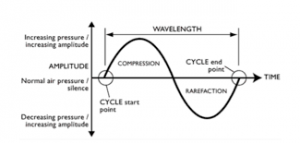
Sound wave is always represented sinosudal continous waveform,The graph indicates a wave traveling along a path from left to right, but real sound waves travel in an expanding sphere from the source. However the 2-dimensional model works fairly well when thinking about how sound travels from one place to another.
In an electronic signal, high values represent high positive voltage. When this signal is converted to a sound wave, you can think of high values as representing areas of increased air pressure. When the waveform hits a high point, this corresponds to molecules of air being packed together densely. When the wave hits a low point the air molecules are spread more thinly.
All waves have certain properties. The three most important ones for audio work are shown here:
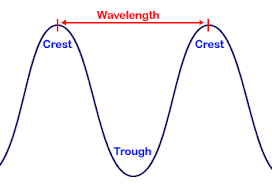
Wavelength: The distance between any point on a wave and the equivalent point on the next phase. Literally, the length of the wave.
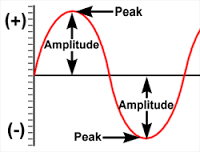
Amplitude: The strength or power of a wave signal. The “height” of a wave when viewed as a graph.
Higher amplitudes are interpreted as a higher volume, hence the name “amplifier” for a device that increases amplitude.
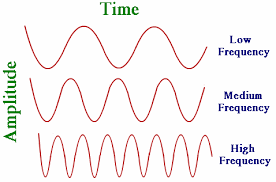
Frequency: The number of times the cycle occurs in one second. Measured in kilohertz (Khz), or cycles per second. The faster the sound source vibrates, the higher the frequency.
Interference:- In a given medium when two waves collide as a result of which they interfere one another waveform is called interference .
Phasing
When waves interfere with each other depending on their phase relationship:-
- Sound waves which are exactly in phase add together to produce a stronger wave is called constructive phasing.
- Sound waves which are exactly inverted, or 180 degrees out of phase, cancel each other out and produce silence. This is how many noise-cancellation devices work called destructive
- Sound waves which have varying phase relationships produce differing sound effects.
Speed of sound


Decibel
It is one tenth of a bel (named for A. G. Bell), but the larger unit is rarely used. The decibel is a measure of sound intensity as a function of power ratio, with the difference in decibels between two sounds being given by dB=10 log10(P1/P2), where P1 and P2 are the power levels of the two sound
Decibel of audio in power :- dB=10 log10(P1/P2)
Decibel of audio in voltage :- dB=20 log10(v1/v2)


